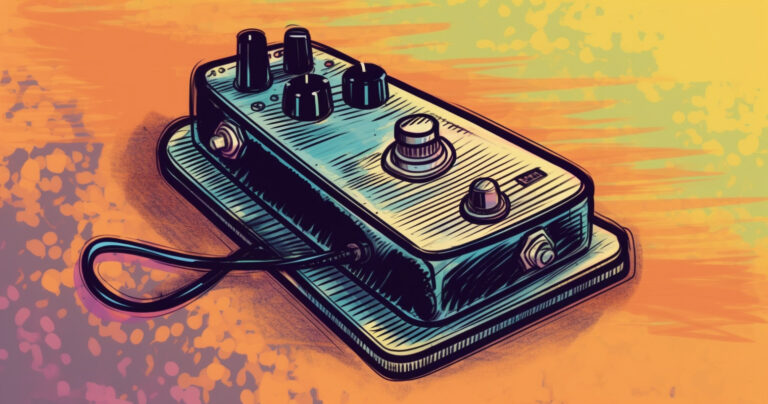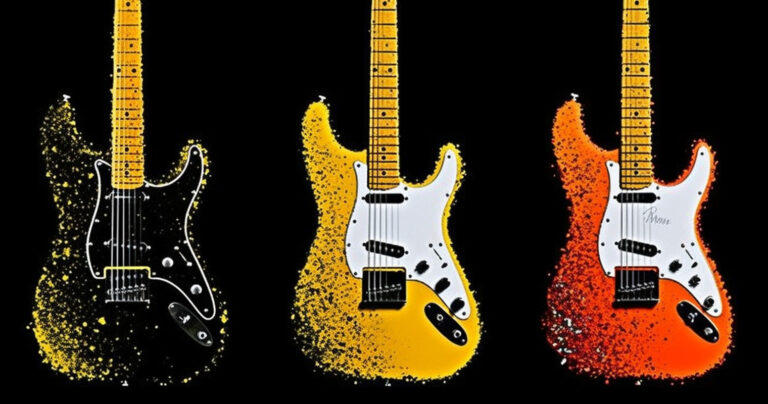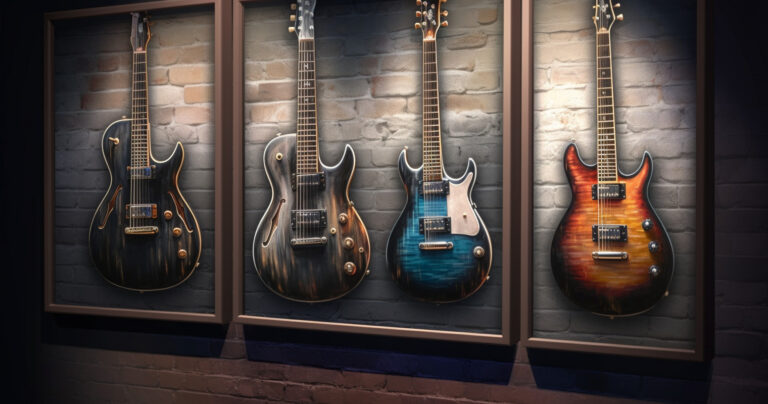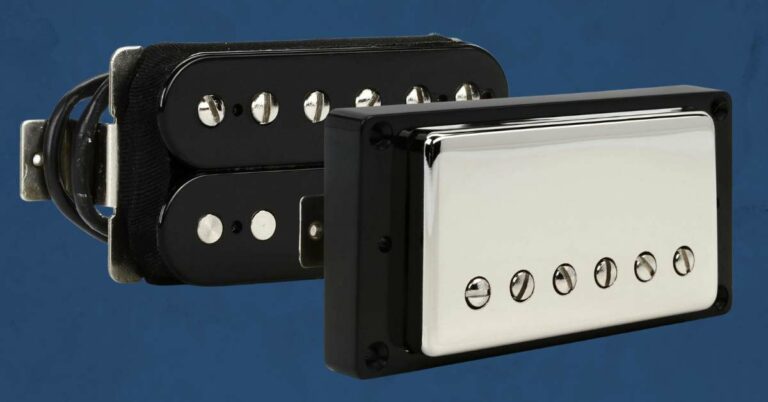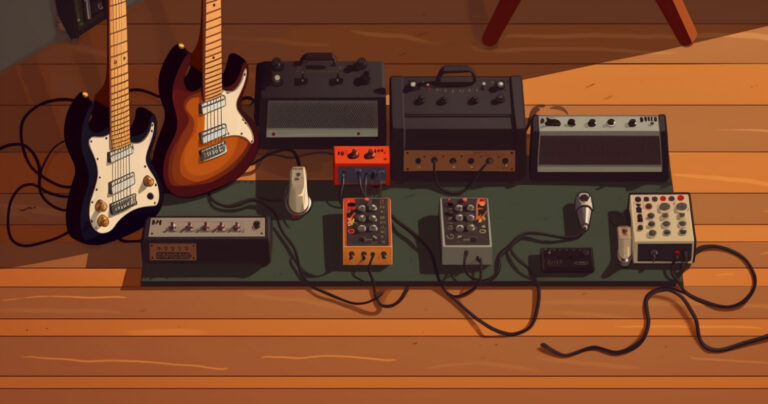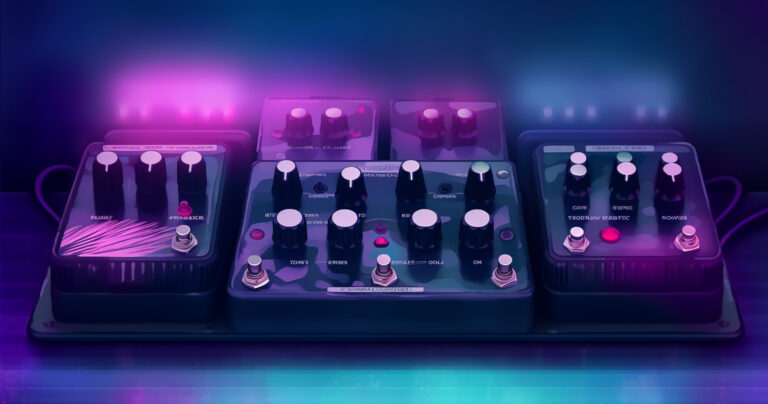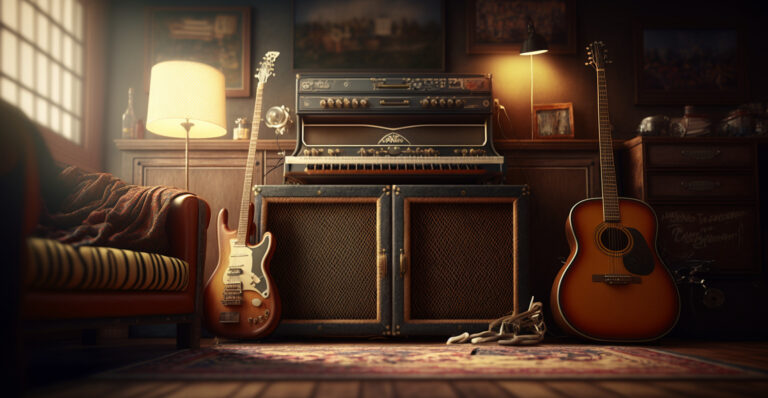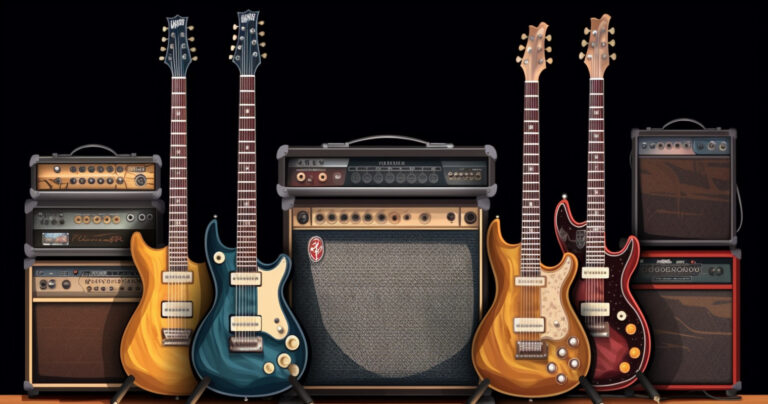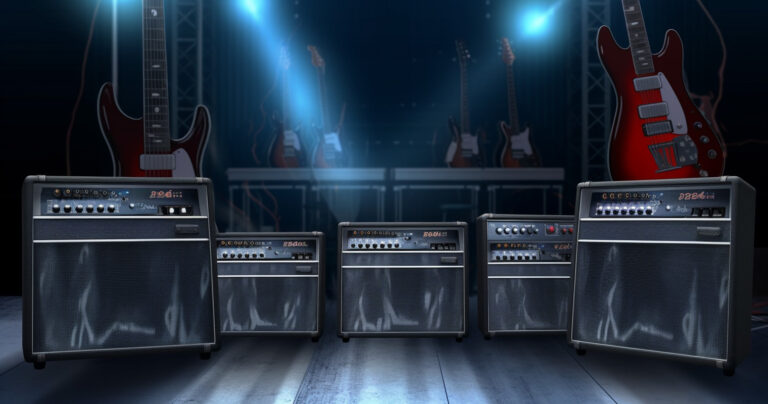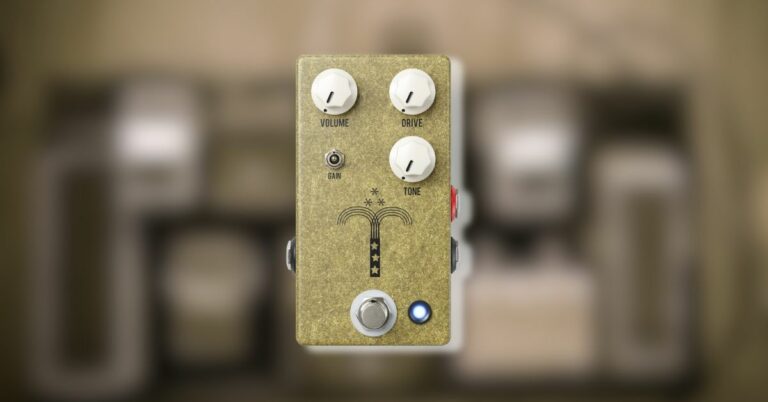Noise gates are an essential pedal for improving guitar sound and when you first add this pedal, the common question is: where do you put a noise gate in the signal chain?
Noise gates are designed to reduce unwanted noise and create a more pristine sound. In this article, we’ll explore the importance of noise gate placement, how they work, their various functions, and where to position them in relation to other pedals.
So let’s dive in and learn how to create noise-free guitar bliss.
How a Noise Gate Works
A noise gate has a built-in gate that separates two areas inside the pedal, muting and reducing sounds below the gate while leaving sounds above it unaffected. This gate can be set to completely cut out sounds or make them smoother, depending on the desired effect.
The purpose of a noise gate is to filter out unwanted hum and background noises that can interfere with the overall sound quality.
Determining if You Need a Noise Gate Pedal
Determining whether you need a noise gate pedal depends on the amount of hissing and humming you experience in between playing. If you find that your guitar signal is plagued by excessive noise, especially when using high gain or single coil pickups, a noise gate pedal can be a valuable tool to have in your arsenal.
These pedals are designed to reduce hissing and humming caused by noisy pickups and high gain settings. They work by cutting out the signal when it falls below a pre-set threshold, effectively blocking the noise until you start playing again. However, it’s important to note that noise gate pedals can also decrease sustain by cutting off the signal prematurely.
Functions of a Noise Gate Pedal
To control the filtering and reduction of unwanted noises, adjust the threshold, decay, release, and hold controls on your noise gate pedal. These functions play a crucial role in shaping the behavior of the noise gate and achieving optimal noise reduction.
The threshold control sets the level at which the pedal cuts off the signal. By adjusting this control, you can determine the sensitivity of the noise gate and specify the point at which it activates. This is particularly useful for finding the right balance between noise reduction and sustaining your guitar’s sound.
The decay control determines how quickly the noise gate closes after the signal falls below the threshold. This control allows you to adjust the speed at which the noise gate mutes the unwanted noises, ensuring a smooth and natural transition.
The release control governs how fast the noise gate opens once the signal exceeds the threshold again. By adjusting this control, you can control the timing of when the noise gate allows the sound to come through, providing greater control over your guitar’s dynamics.
Lastly, the hold control specifies how long the noise gate remains open after the signal falls below the threshold. This control enables you to define the duration for which the noise gate stays active, preventing any unwanted abrupt cutoffs.
The Importance of Noise Gate Placement in Signal Chain
The placement of the noise gate in the signal chain plays a crucial role in its effectiveness. If you want to reduce noise in your guitar signal chain effectively, it’s important to place the noise gate after the point where the noise is worst.
By placing the noise gate after the source of the noises, you can specifically target and eliminate the unwanted sounds. This allows for a cleaner and more professional sound output. When placing the noise gate, it is recommended to test each pedal individually to identify the cause of the unwanted sounds.
Placing Noise Gate After Distortion Pedals: The Most Common Placement
Placing the noise gate after distortion pedals cuts out unwanted frequencies. This is a common placement for noise gate pedals in the signal chain.
Distortion pedals, especially when set to high gain, can generate significant noise that can be bothersome. By placing the noise gate after the distortion pedal, you can effectively eliminate those unwanted frequencies and achieve a cleaner and more focused sound.
Placing Noise Gate Before Time-Based Effects
If you want to achieve a clean and articulate sound with your time-based effects, it’s important to position your noise reduction before these effects in your guitar rig.
Time-based effects such as delay, reverb, and modulation pedals are designed to enhance your sound and create spacious, atmospheric tones. However, they can also amplify any unwanted noise or hum in your signal chain.
By positioning your noise reduction before your time-based effects, you can ensure that your guitar rig produces a clean and professional sound, free from any unwanted noise or hum. This will allow your time-based effects to shine and create the desired atmospheric tones without any interference.
Placing the Noise Gate After the Noisiest Point
Since every pedal is different, you can always consider placing the noise gate after the point in the signal where the noise is at its worst. This ensures that the noise gate can effectively eliminate the unwanted noise without affecting the desired signal.
By placing the noise gate after the source of the noise, whether it’s a pedal or a noisy pickup, it can specifically target and reduce the problematic noise. This placement allows the noise gate to accurately detect the noise and apply the necessary attenuation to eliminate it.
You will need to start with all of your pedals turned off. Then turn on your first pedal. Next move on to your second pedal and so on. At some point when you click on a pedal, you will notice the most noise, this is a good place to put your pedal.
Using Multiple Noise Gates for Mild Reduction
For mild reduction of noise, you can use multiple noise gates on mild settings before amplification. This technique can be especially useful in situations where a single noise gate may not be sufficient to completely eliminate unwanted noise.
By using multiple noise gates, each set to a mild setting, you can effectively reduce noise without sacrificing the integrity of your guitar tone.
To implement this approach, you would place the first noise gate at the beginning of your signal chain, right after your guitar. This initial noise gate would help eliminate any noise introduced by the guitar itself or by the pickups.
Then, you can add additional noise gates at strategic points in your signal chain, targeting specific sources of noise. For example, you could place a second noise gate after your overdrive or distortion pedals to reduce any noise generated by these effects.
By using multiple noise gates in this manner, you can effectively address different sources of noise in your signal chain, resulting in a cleaner and more professional sounding guitar tone.
Where to Put a Noise Gate Pedal: Conclusion
The placement of a noise gate pedal in a guitar signal chain is crucial for achieving clean and noise-free tones.
However, since everyone has different gear and pedal boards, there is no single perfect place to put the noise gate. You need to experiment with different options.
In the end, you just want a nice clean, noise-free sound that doesn’t hurt your tone or dampen your sustain!

